From a fascinating physical installation to a mesmerizing 360 experience: on the journey through music and VR of “The Nature of Isolation and Loneliness,” currently at CPH:DOX 2021
If there’s one thing I’ve learned in these months touched by Covid, it’s that isolation and physical limitations will never stop art from being made, known and enjoyed. Even more so today, with the help of technological tools that allow artists to offer culture to this world and continue to share their voices.
Such is the case in The Nature of Isolation and Loneliness, a multi-voiced choral piece livestreamed in VR that “addresses the stigma of loneliness in a time engrossed in social media, self-staging, “likes” and virtual friends”.
I may not be an expert on art installations, nor am I usually a big fan of 360, but what this work did for me was make me breath the soul of art and performance, which the artists conveyed through a skillful use of all the available tools. On the one hand, the “classic” ones, such as voices, music, lights, staging, actors literally surrounding you and looking you straight in the face – something that makes you feel like they’re talking to you and only you. And on the other hand, technological tools that are new to these artists (specifically, the livestream in 360) and that have transformed what was already a fascinating physical, musical installation into something we can access from anywhere in the world – connected in an isolated situation.

The Nature of Isolation and Loneliness at CPH:DOX 2021
The Nature of Isolation and Loneliness is part of the lineup for the Inter:Active section of CPH:DOX 2021 (you can read XRMust’s interview with its curator, Mark Atkin, here).
A “performative study and manifestation of isolation and loneliness” created by artist duo Philip|Schneider and installation artist Hans Rosenström, and directed by Andreas Koefoed, The Nature of Isolation and Loneliness is a VR experience co-produced and recorded at Sort/Hvid. It can be experienced using a laptop or a cell phone (a dark room is recommended), but I think its effectiveness is most meaningful when experienced from inside a headset.
When the experience begins, you are alone. There are shadows in the corners and voices whispering melodically, but you can’t see anyone yet… and when you do, it’s almost eerie to realize how these people are slowly closing in, surrounding you.
Their rhythmic singing of fragmented musical phrases gets under your skin and mesmerizes you. Understanding what they are saying is almost irrelevant to your perception, as their slowly increasing intensity makes you feel their words – their desire, their acceptance, their anger… their pain.
The music lulls you into an almost hypnotic state, and when the scene changes and the three individual singers enter the stage, you even forget that your headset lenses aren’t clean enough, the headset you’re wearing and the stitching lines you can see here and there. You are in that empty space with them, a lone figure in the audience watching them, but also a participant in their emotions.
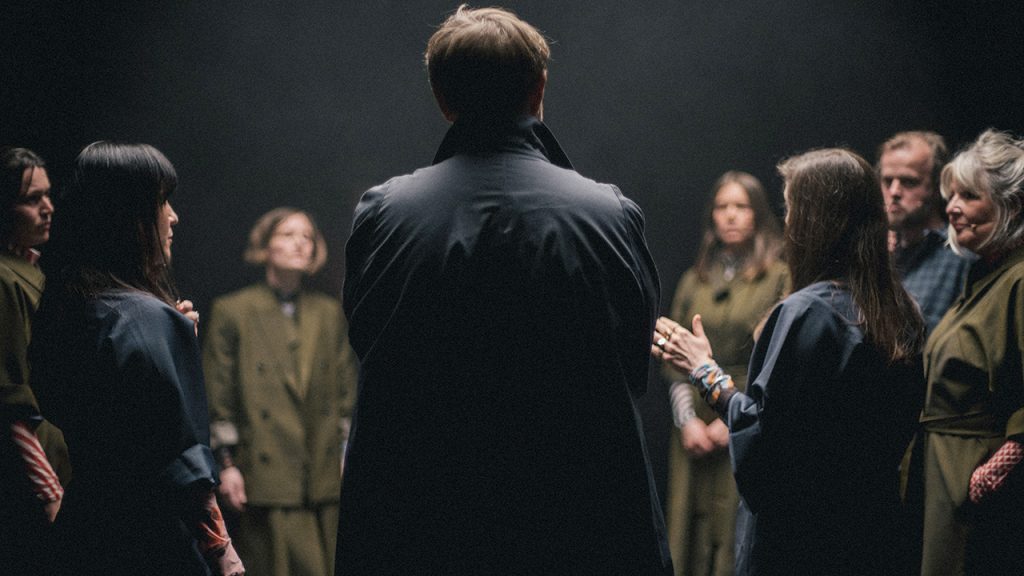
But the moment the last performer and the final chorus draw to a close, you’re ready to take the next step and become one of the performers yourself. You simply… join them. You feel the need to. You turn your back to the backstage behind you, following their lead, and look ahead to an invisible audience, to the light that illuminates the stage and blinds you. It’s a symbolic moment of the journey you’ve taken into loneliness, but also a liberating experience of communion with the people around you. From an immersive standpoint, the most effective moment of the whole show.
After joining this performance, I contacted lead artists Philip | Schneider and Hans Rosenström, and the director of the piece Andreas Koefoed, to know more about how this project was originally conceived and then developed. Here’s what they told me.
A change in perspective with The Nature of Isolation and Loneliness
AGNESE – What inspired you to create The Nature of Isolation and Loneliness, and why was it important for you to talk about those topics at that specific time?
HANS ROSENSTRÖM – We started to work with this piece in the fall of 2019, it was first created as a live performance for VEGA in Copenhagen. The initial idea was quite simple, to reverse a concert setting with a hidden choir placed within the audience. There was something intriguing to raise the question of loneliness in this shared moment of gathering. The beautiful thing of working with a choir is that it enables us to play with the relationship with an individual voice and a collection of voices.
Loneliness and involuntary isolation is an important topic in our contemporary society that feels sometimes overlooked. The concert venue VEGA was built as a People’s House, so it has always had this function of community. The script was pretty much written before the end of 2019, then came 2020 and loneliness and isolation was suddenly everyone’s daily routine.
JOSEPHINE PHILIP & HANNAH SCHNEIDER – We were also very interested in moving the sound of the voice from the stage, and out into the audience, since this topic feels like it requires a certain closeness. This idea of getting very close to the audience has followed the piece from live performance to VR experience.
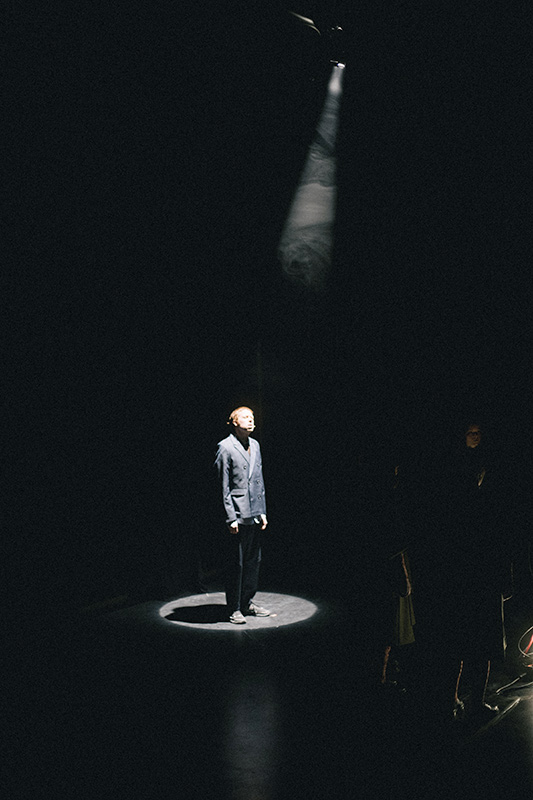
On the role of music
A. – I was intensely fascinated by the music: it was pervasive and stayed with me even after the show was over. How did you work on it? How did you connect it to the meanings you wanted to express?
H. R. – The text was written and researched together but when it came to music Hannah and Josephine did the composing, they sent material for me to Stockholm which we then discussed and developed together, and eventually it found the final form.
J. P. & H. S. – We were extremely fascinated by the fact that loneliness activates the same center of the brain, as physical pain. The idea that loneliness has a sense of matter and physical presence is quite overwhelming. We have tried to capture this in the musical composition to manifest the feeling. We worked with repetitive musical themes expressed by different voices to capture the universal pain of being lonely. On a more technical level we worked with pentatonic, simple melodic structures to engage the intuitivity of the listener and resonate with the heart.

From a physical installation to a VR experience
A. – Loneliness is something that has become even more relevant as a topic in recent months. How did the piece change since you first presented it at VEGA?
H. R. – There were some changes, especially since at the beginning the piece was supposed to infiltrate a live concert, which in the end I’m quite pleased didn’t go that way, since the focus of the audience would have been very different.
Distancing the audience from each other became very important for a safe experience. However this supported the structure of the piece as well, and did not feel like a compromise. In the live performance the separation of the individuals in the crowd happens also by fading out all the lights. The audience can not see each other, they can only hear the singing voices, which themselves are mixed within the audience inside the darkness. This creates a very distinct experience, since some voices appear closer to you and others further apart.
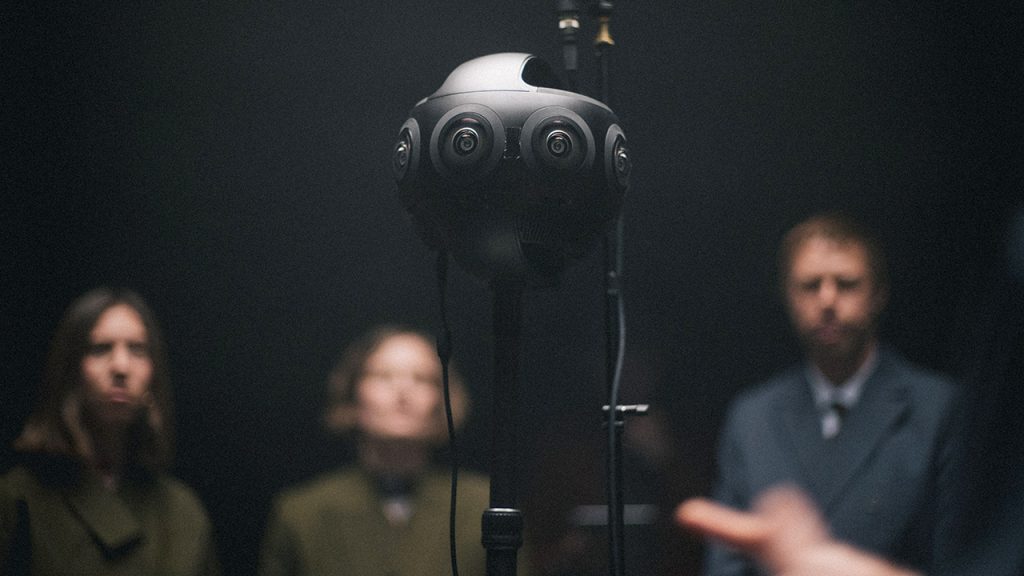
A. – Why the idea of creating a VR version of The Nature of Isolation and Loneliness?
ANDREAS KOEFOED – When Josephine & Hannah presented the work for me, I thought that it would be ideal for a VR piece because in that format we could create the feeling for the viewer of actually being in a dark room with the singers and then, by using the light, work with both the feeling of loneliness and the feeling of being immersed by people when the singers move close to the viewer. The circle was already an ideal formation for the singers to sing in, so it all made sense.
J. P. & H. S. – We also thought it was very interesting to investigate the field of VR in terms of getting the actual feeling of live performed music out to the viewer. Can you capture the essence of the music in this format? This version was also a great leap technically for us and a very interesting format to dive into. We actually feel that this could be a new way of experiencing live music.
A. – Going from this kind of performance to a 360 video can be a difficult transition. What aspects of the original performance did you have to adapt to the new media you would be using?
A. K. – In the original piece from Vega, the viewer would be lying on the floor in the dark listening to the choir and then towards the end a sunlike light would rise and the singers would turn towards it and the viewer would watch them standing like that. In the VR piece we also tried to create this kind of ending, so that the viewer would no longer be the center of attention from the singers, but rather feel like standing as part of the group looking towards the sun.

A. – You are renewed artists in sound-based installations and this VR experience is heavily based on spatial audio. Could you tell me more about this aspect and how you worked on it?
J. P. & H. S. – For us the process was quite natural as we are used to working with recorded sound and music, not in an installation format as this is, but we are both also recording artists.
Hans is also very used to working with sound. When we first did the piece in Vega we all knew that we wanted to install it in some format, and the sound was therefore recorded. When curator Matthias Borello asked us if we wanted to be a part of a group exhibition at KØS, Museum of Art in public spaces, we made a ten speaker installation of the piece which is right now exhibited there simultaneously with this VR experience.
Here we worked with the amazing sound designer Asger Kudahl who helped us mix it so it fitted the room perfectly. He is very used to working with spatial audio. When we decided to do the piece in VR, we instantly asked him to be involved in the process of recording and mixing the sound for this as well.
A. – How do you think the choice of 360 affected your actors’ performances and how did you work with it?
A. K. – The VR field is pretty new to me and I am not that familiar with other VR-works. Looking straight into a VR camera seemed to be a little strange for the singers, but at the same time standing in the circle with the other singers is a very natural formation so my feeling was that it pretty soon became a very natural feeling.
J. P. & H. S. – The cast of singers/performers were all selected for their individual skills and different backgrounds, some are classical trained, two are opera singers and some are from the indie and pop scene in Denmark. Since we are both also performing in the piece, we found the VR recording made the experience even more intense for us as performers as we are all “facing” the camera all the time, so every little move you make will be recorded.
As an audience you can choose to focus on only one performer, and therefore everyone had to be extremely focused which we think gave the performance something special. Also – in terms of singing together- being in a circle is pretty much the optimal way of hearing each other and corresponding with our voices.

A. – The ending was both a symbolic moment to me and an original technical passage that I appreciated for the way it changed my role within the experience. Is there a line or scene in The Nature of Isolation and Loneliness that was particularly meaningful to you, personally?
H. R. – I’m glad you feel that way, the sunrise in the end feels very important. When it was performed in Vega we could use the light rigging from the stage to create the sunrise, which was pretty intense. But even if there might be parts that I am more attached to than others I think all elements are included for a reason and support the whole experience.
J. P. & H. S. – There is something special about the ending, we also loved how the audience all of a sudden becomes a part of the experience and a part of the performers. Last part of the performance is also a kind of “chant” where all singers do their own thing and improvise over the theme. It feels like we almost go into a musical trance together, and that part of the piece is always very different from take to take – and very special to all the performers. It is also nice that it connects the first performance in Vega and the VR with the sunrise.

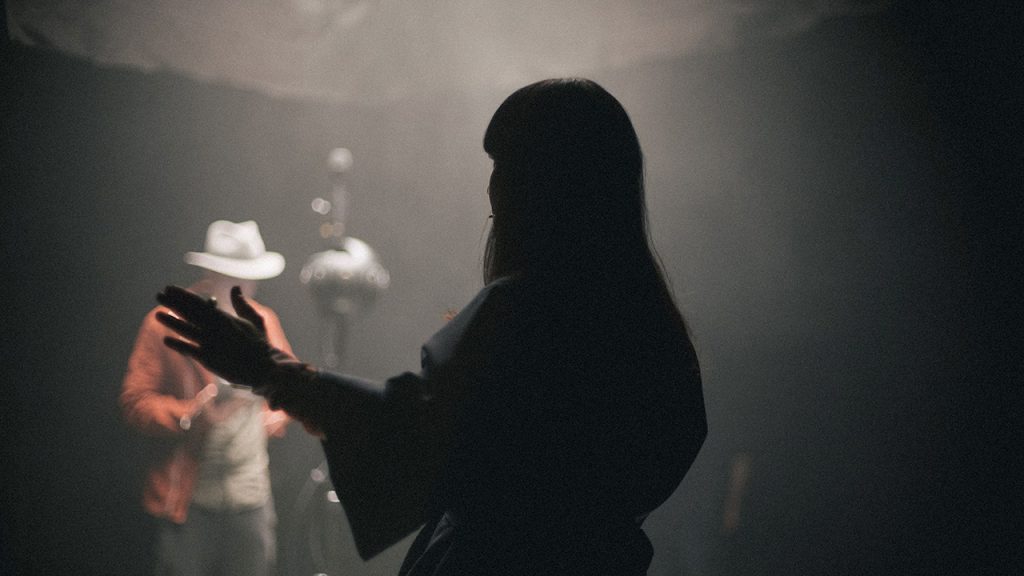
On the relationship between art and music and between art and VR
A. – Josephine and Hannah, you mention on your websites the work you do in exploring the boundaries between art and music. What can you tell me about the beautiful relationship between them today?
J. P. & H. S. – For both of us as singers and composers, it has been a great enrichment to broaden our field and include the visual and spatial aspects into our music and performance. These aspects add immensely to the feeling of our compositions, and the way we interact with our audience. We now simply can’t imagine ourselves performing without these elements intertwined.
Working across artistic fields and with skilled and experienced artists all across as we’ve done in this case is such a gift! In our case, the voice is the red thread throughout all we do, with its physical, emotional and universal qualities applying itself to both the visual and textural aspects of the work.
A. – Do you think that media like VR, 360, AR and the like are changing the way art is made and perceived?
H. R. – The new media opens up immense possibilities for creating experiences; even if it might not change the way art is fundamentally made it will for sure open new trajectories, especially when these media become more accessible for artists, who tend to work more experimentally and with lower budgets, than let’s say the gaming world or pop culture.
One pitfall might be if the media dictates the outcome, that because it is so expensive to develop, the expectations are that the project should have a purpose beyond itself.
A. K. – I come from a film background and for me VR is definitely exciting but also a very new territory. The challenge is that some of the basic tools in filmmaking are not valid in VR. You can’t frame an image and guide the experience for the viewer. It is also difficult to cut in a VR film without losing continuity.
What you have to do in VR is to set up a situation that is interesting enough for the viewer to look at and be part of in real time. And then instead of guiding the viewer’s eye through framing, you can guide them through sound. It works well for a musical piece because it gives a completely new point of view compared to a regular concert experience. I am looking forward to exploring that more.
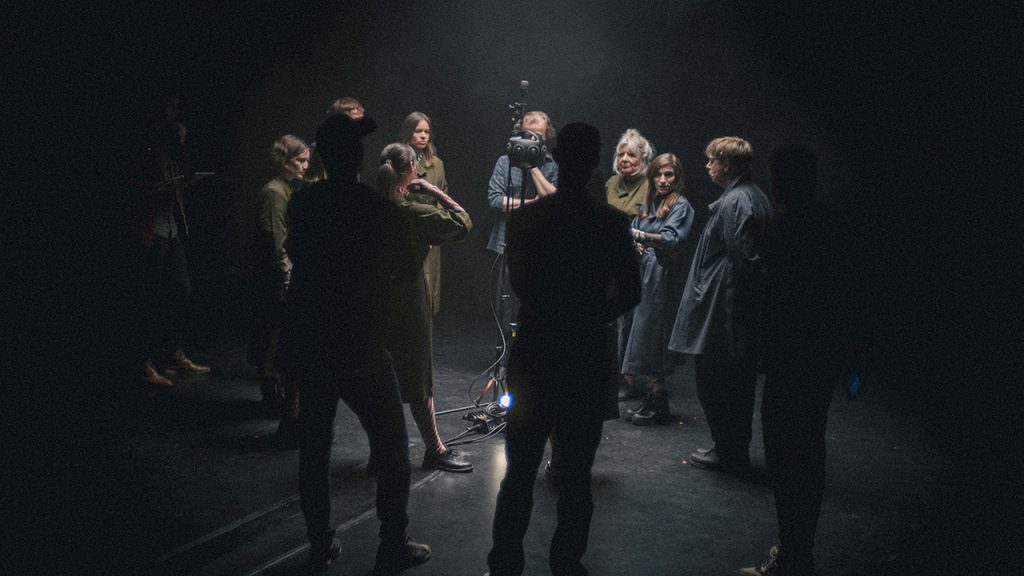

The Nature of Isolation and Loneliness – A live experience in VR is a work by Philip | Schneider, Hans Rosenström and Andreas Koefoed and it was presented at CPH:DOX 2021 as a world premiere.
Here’s its page on the XRMust database.

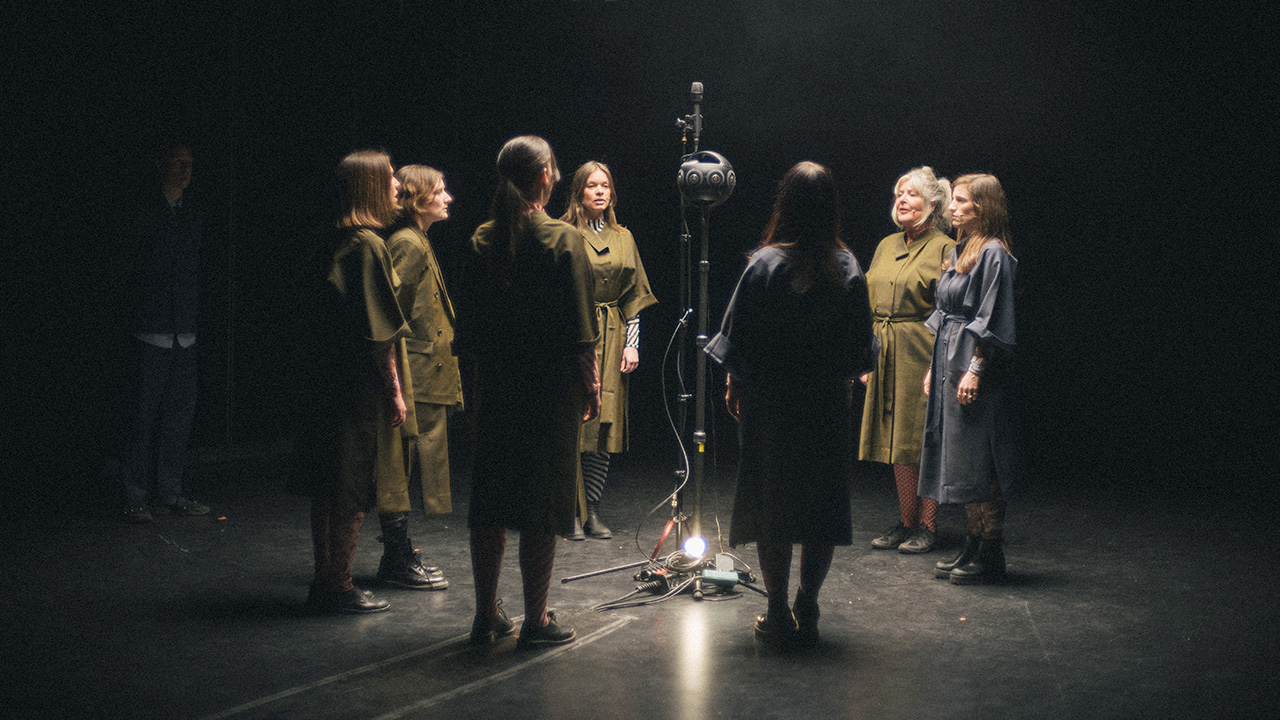

Leave a Reply
You must be logged in to post a comment.